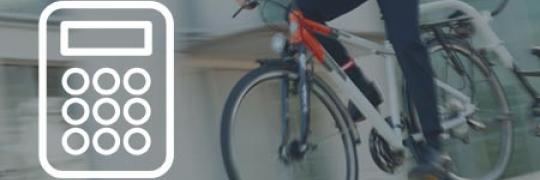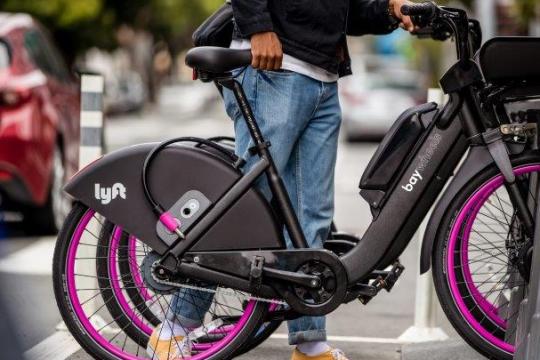
Once you discover the freedom, convenience and fitness benefits of biking to work, you'll wonder why you didn't start riding sooner. If your work place is too far to bike, consider riding to transit stations or Park & Ride lots. Enjoy the ride!
Getting Ready
Before starting out, take time to consider the following:
Determine what route you will take.
Use a map to plan a route that avoids freeways and steep hills. Explore the area for alternate routes. If your commute involves a bridge, don't despair - every Bay Area bridge provides access (either by path or bus/shuttle) for bikes. Click here to find local bike paths.
Decide if you need a change of clothes.
On a short, relatively flat ride, you will likely arrive to work in good shape. For longer rides, you'll find that racks, bike bags and special panniers are great for carrying a change of clothes to work wrinkle-free. You can also leave a small stock of work clothes at the office or use another commute option when you have special meetings that require dress attire.
Know in advance where you'll park.
Does your employer offer bike racks and/or lockers? If so, get clearance to use lockers and parking areas at your worksite. If not, you could try storing your bike in your office or a nearby building.
If you are biking to a transit station, visit the transit agency website for information on bike rack and locker availability. Click here for information on municipal bicycle parking facilities.
Check your equipment.
Essential equipment you will need includes a:
- sturdy bike that fits you properly
- comfortable helmet (with "ANSI" or "SNELL" safety certification)
- strong u-shaped lock
- headlight (required by law if you ride at night)
- tail lights
Also consider a rear-view mirror, biking gloves, repair kit, a mounted water bottle, bicycling shoes, and wet weather gear if you plan to ride in the rain.
Ride the route on your day off.
Carry the same amount of clothes and other items as you would on a work day. Is the route too steep? Is there ample lighting for riding in the evening? Explore alternatives. Imagine traffic conditions during regular commute hours, and remember that your route will look different after dark.
Know the rules of the road.
You are recognized as a legal driver of a vehicle. Therefore, drive your bicycle as you would any vehicle. Obey all traffic laws. Click here for a brief run down on safe bike riding.



